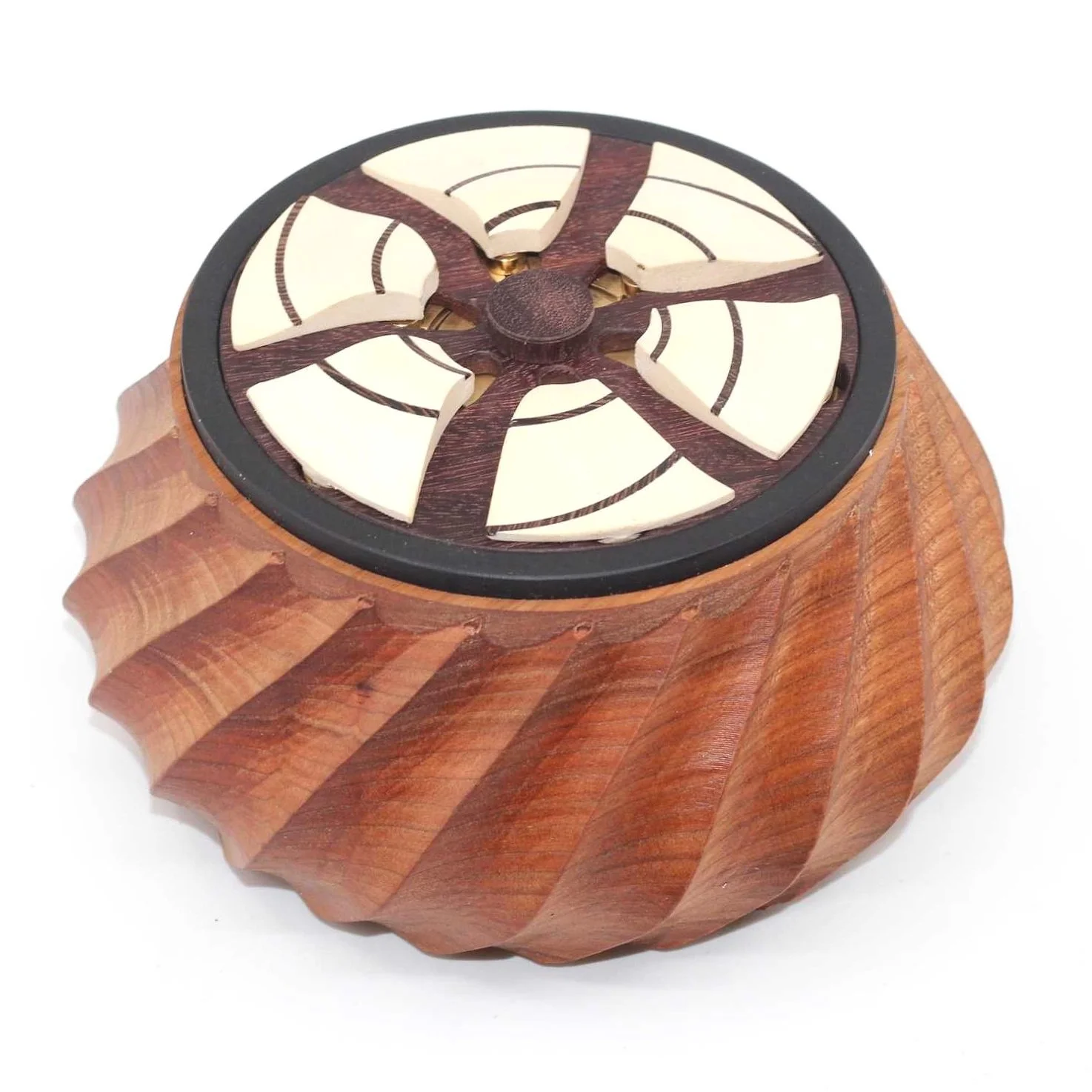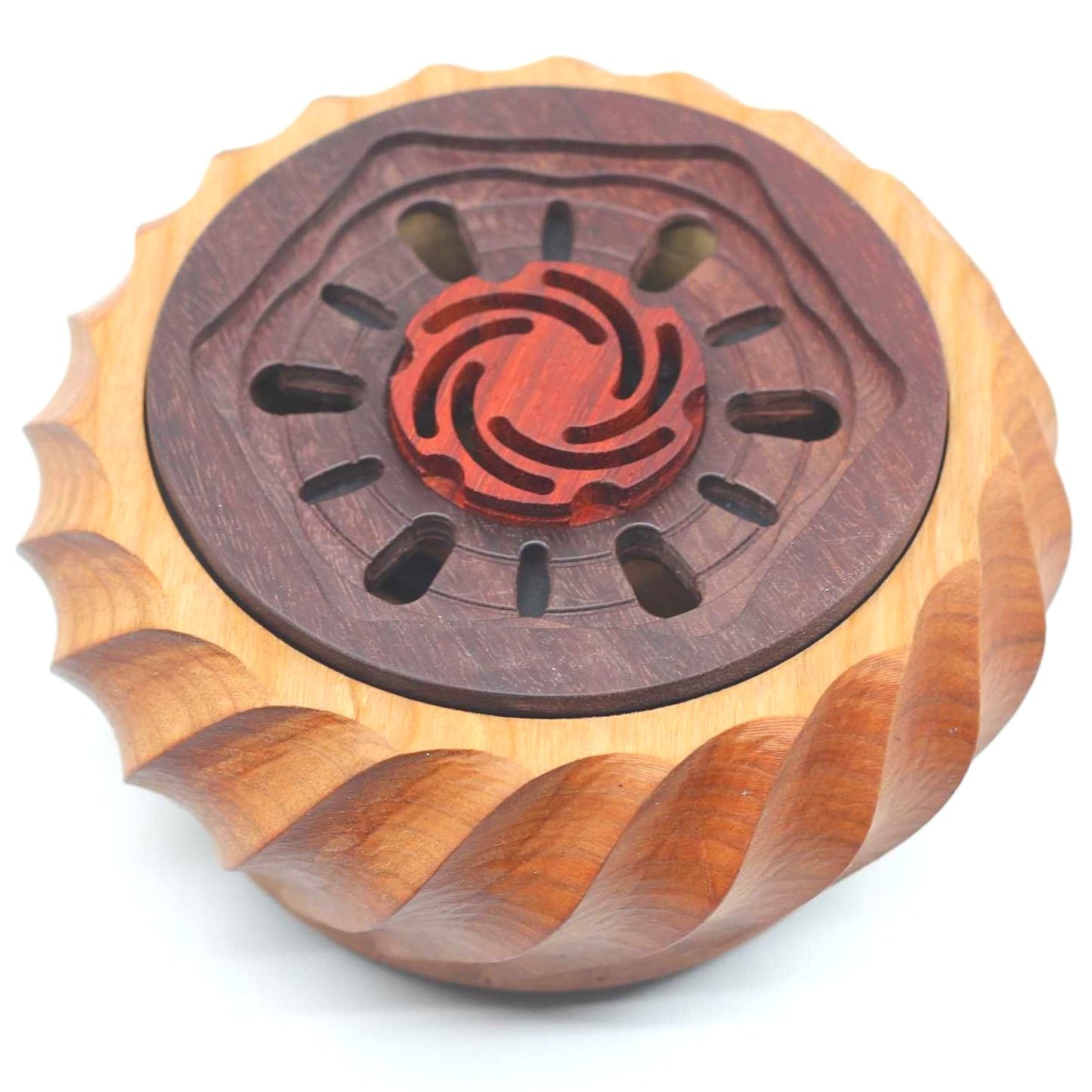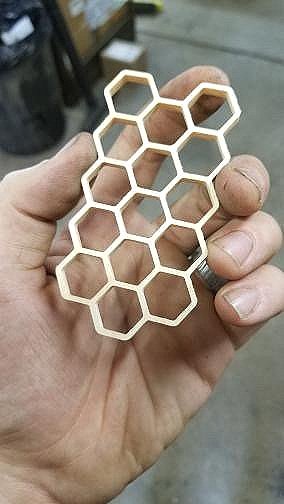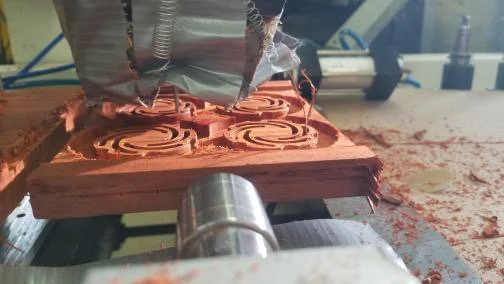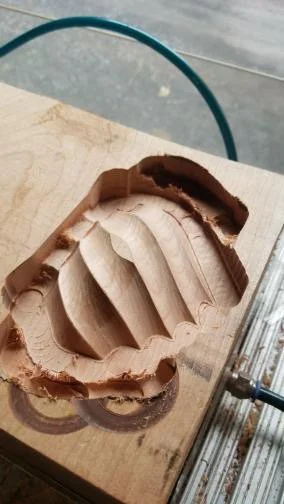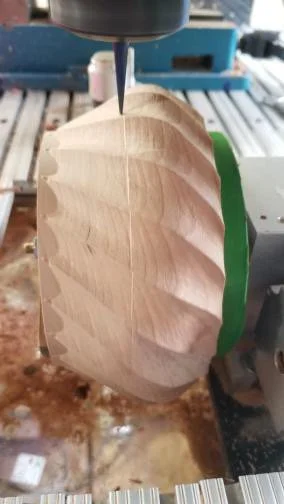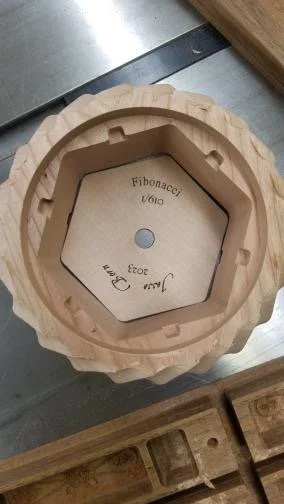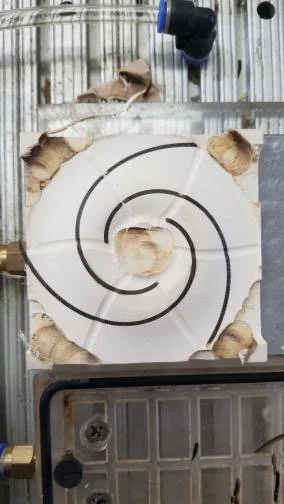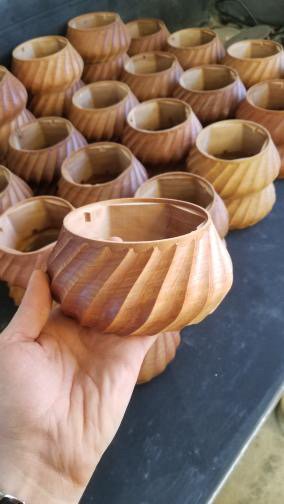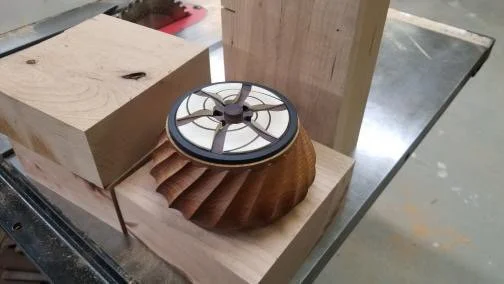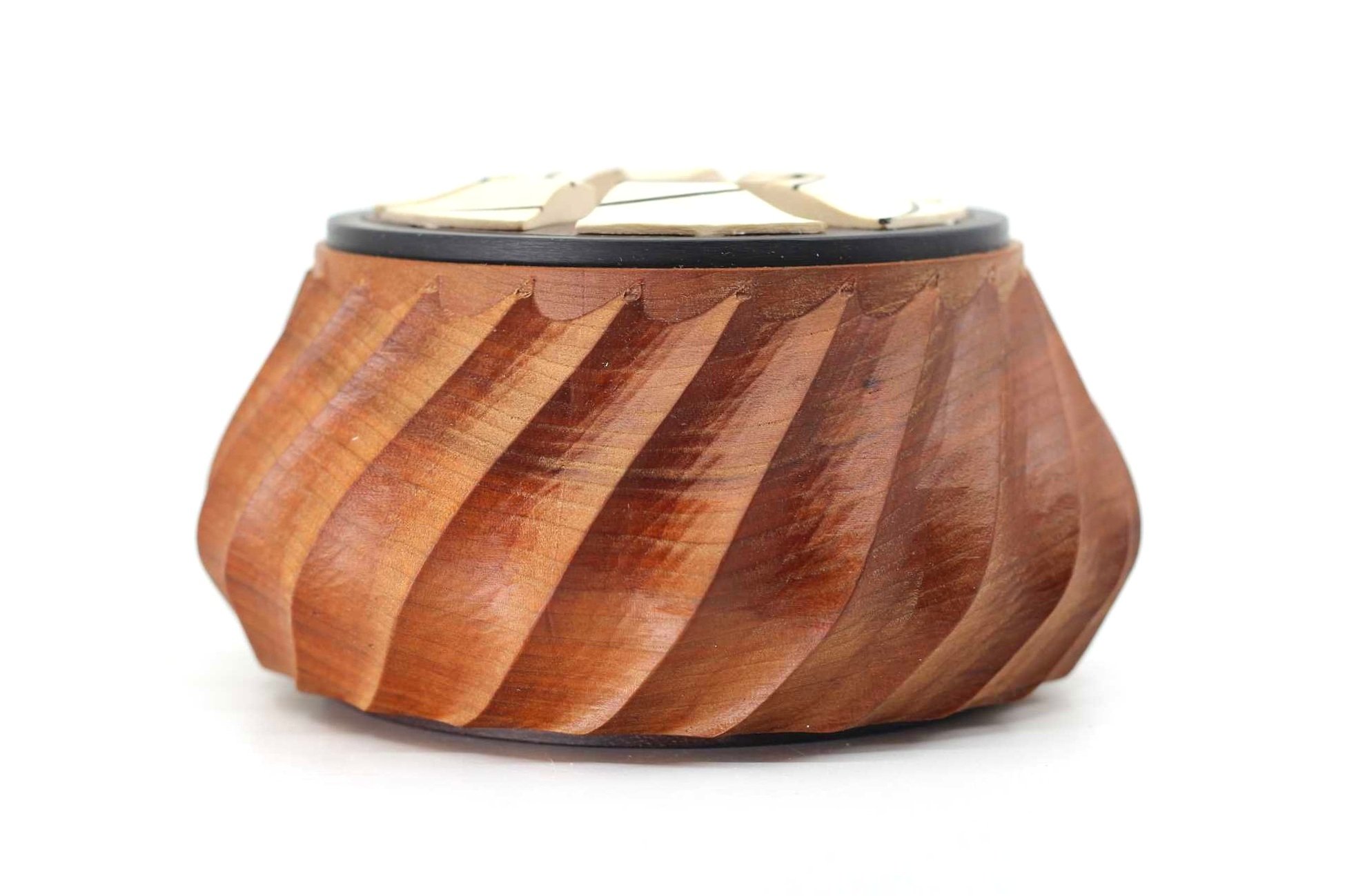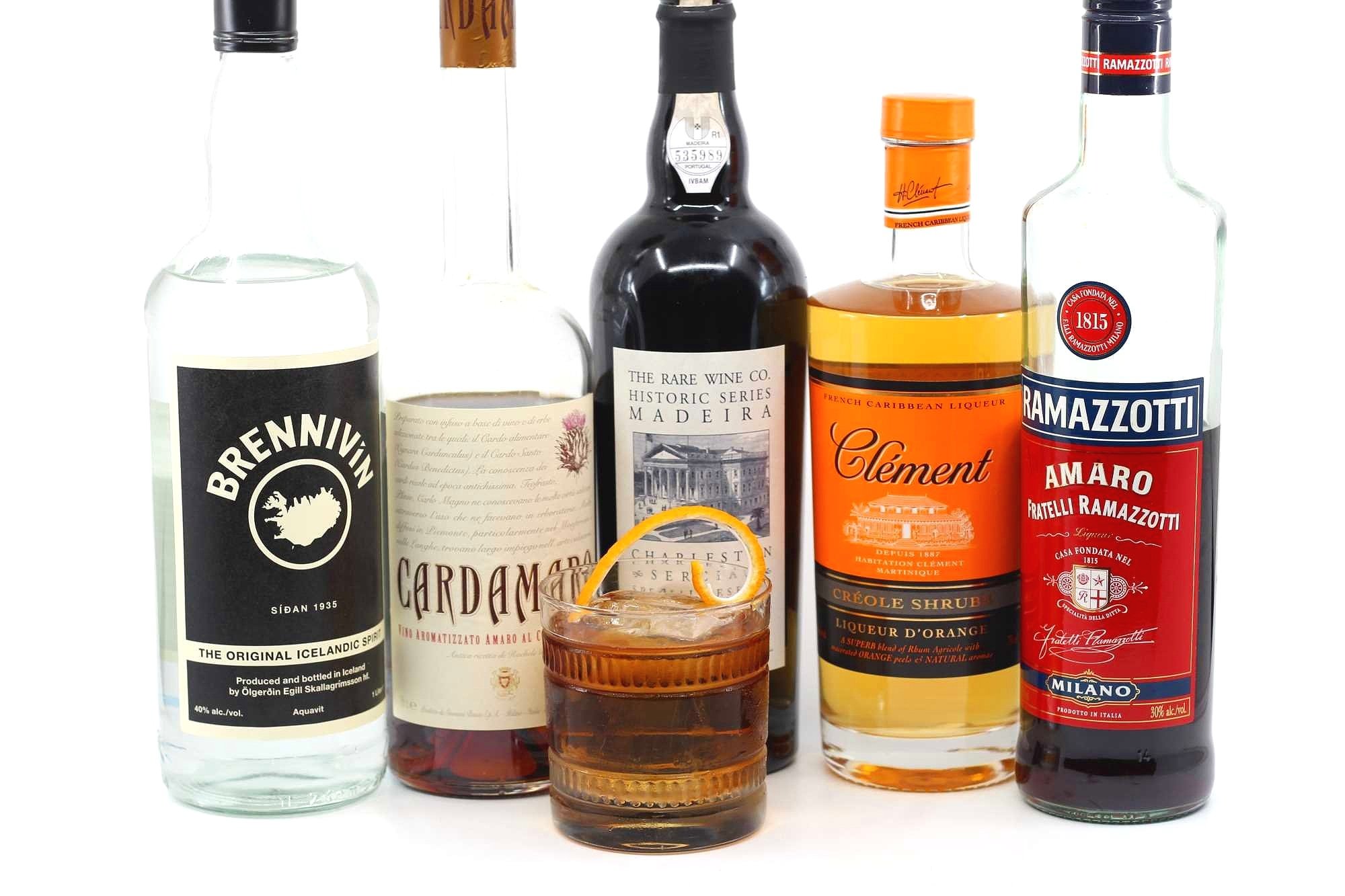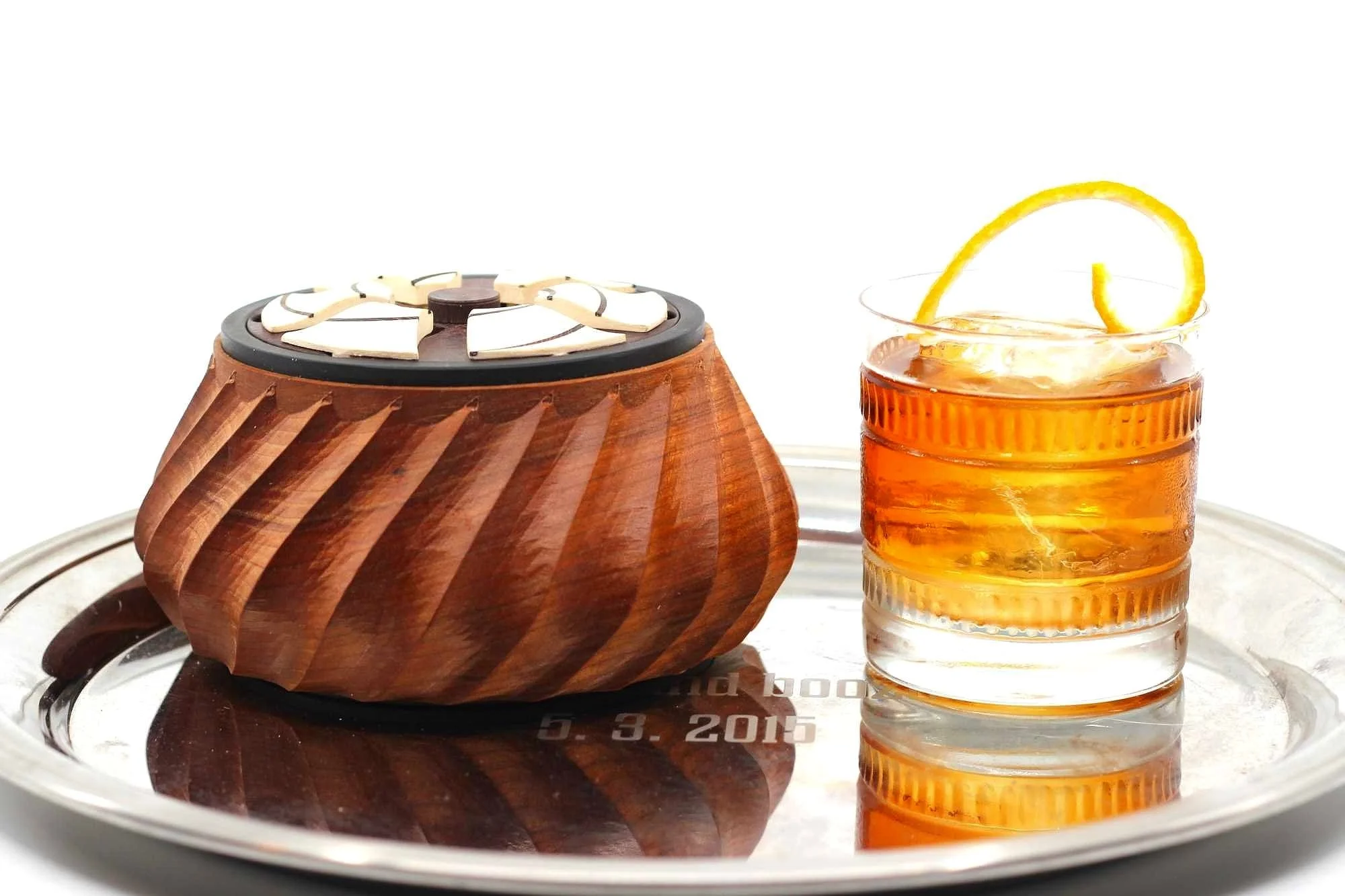By the Numbers
Fibonacci Box
Fibonacci Box by Jesse Born
The end of year reflections have crept up on me too quickly this year, I’ve had a whirlwind of work and play related activities and have not had a moment to stop and contemplate, let alone craft another end of year puzzle hunt … Yet here we are! I could use a peaceful moment to read a book! Well it’s been quite a year on the global stage but we won’t get into that. Looking at the numbers, and according to my calculations, which have not been terribly successful at times, this will be the final box and booze offering of our current collective trip around the sun. I suppose that would be number 52 for the year if you are keeping track. I do think it’s best in these circumstances to play it by the numbers.
it de-phi-s explanation
Speaking of numbers, I’ve been counting the days until this particular number came into reality. It is amazing to see the development of this idea from Jesse Born’s original concept featuring everyone’s favorite irrational number, the Pi Box, to his newest creation which is based on a similar concept but a different sequence. The evolution of Jesse’s craft is on full display, and he intentionally took his time with this box in order to showcase his abilities now to produce a high class, elegant and structurally sensational piece of art which also functions as a puzzle.
Euler-n to love it
The Fibonacci Box pays homage to a famous number construct attributed to Leonardo of Pisa, a thirteenth century Italian fellow with a preoccupation for rabbit reproduction. He put the theoretical sequence of rabbit population expansion down on paper, explaining how it followed a pattern where each subsequent rabbit pair would be the sum of the prior two. The concept can actually be traced back to 200 BCE Indian mathematics and the work of Pingala regarding Sanskrit poetry. The fact that the sequence can be described in art as well belies the fact that it is directly related to the “Golden Ratio”, that perfect balance of measurements which underlies all beauty and art. Perhaps that is why Jesse Born’s new box is so beautiful as well.
have a good go, Avogadro
Jesse came up with the idea for Fibonacci at the time of his pi based puzzle box concept, almost three years ago now. He recalls a conversation or email from the mathematician Jim Strayer at that time commenting on how unlikely it was that the number pi would actually work in a round puzzle “pie” construct, and yet it did, or at least Jesse had found a way. It seemed like a mathematical anomaly too complex to calculate the odds for, so of course Jesse thought “well maybe it could work with the Fibonacci sequence as well.” The Pi box used nine “slices”, so naturally “I tried it with 9 pieces, then 8, 7, 6 and it worked with 6 so I thought well I’ve got to go ahead with that!”
courtesy of Jesse Born
Jesse remains a bit flabbergasted by the fact that these mathematical puzzle boxes actually work as intended. “The chances, I don't - I don't even understand what the odds are as such but it sounds so crazy and it works. To some people it might seem random but it is kind of neat that it works out and that the Pi [box] works out and they complement each other. I made the Pi box back in 2019 so it's been 4 years since and so I wanted to raise the level of craftsmanship and I think I did. Objectively this box is more visually stunning and much more advanced in every way except that instead of the yosegi [on the Pi] I went with inlay because I only had to make 50 of the Pi Box but we have to make 610 of these.” I’m not sure anyone will mind the style choice here because the inlayed spiral works really well for the design and looks elegant, along with the varied mixed materials including brass, and many fine details present, all housed in a gorgeously figured twisting case. The piece is incredible, a true work of art.
courtesy of Jesse Born
At the same time, Jesse has tremendous respect for the traditions of woodworking. Making the best yosegi is a skill he does not have time or money to invest in right now, but he doesn’t compromise on the quality and craftsmanship he is able to achieve with his modern carving tools either, which also require minute care and attention to detail. He notes that the “parts on here are machined from two directions and so we need to flip [them] over many times and machine from two sides.” He recalls that on his legendary Sundial Box, many parts were “only” machined on one side, then laser cut or etched on the other side, which he feels was “a bit more rugged or a bit dated of a box in terms of it's historical [theme] and so you could get away with some roughing and stuff but this box [Fibonacci] is supposed to be super elegant so you need nice machined features and not a lot of hand sanding. You know the Japanese really don't like a lot of hand sanding, they like everything to be cut because it'll produce a sharper edge and it reveals the grain more.”
courtesy of Jesse Born
All of Jesse’s designs typically go through dozens of prototypes, not only to tweak design and puzzling aspects but also to dial in the production line techniques to get the highest quality out of his modern equipment. He admits that “CNC isn't quite as good as a hand plane finished but you know you're not going to get these types of features unless you were to cut them out with a chisel and obviously we just can't do that. But yeah it was a challenge because when you flip a part [over] you have to be twice as accurate because it's doubling your amount of error. [For example] if I cut a pocket 16th of an inch too far this way but then I flip it over I'll be cutting another 16th too far this way. But the mismatch is going to be an eighth of an inch and so it doubles your error. That makes it really tough to hit these targets and we chase that on the CNC router.”
courtesy of Jesse Born
Jesse’s goal with the Fibonacci was to take his Pi Box concept and make a beautiful, high end “sequel” along that theme to showcase what his team is capable of producing. It sits on the mid range of his product line and should attract collectors or anyone with an eye for art with a novel secret. He is already hard at work on his next concept, a “subscription” box based on Sherlock Holmes. “Yeah, obviously excited for the subscription puzzle and I hope everybody gets a kick out of it. It's a very different format so I'm not going to be surprised if some people really don't care for it because we're hitting a few different markets. The “Sherlockian” box is something most people can afford if they want it but then the Captain's Quest has got to go in a much different direction than that and so I don't know.”
you’ll want to walk this Planck
“I'm interested in people's feedback and I hope in the future to keep surprising people with things they weren't expecting. With the Fibonacci there's not a whole lot going on that you're not expecting but I hope just the quality in the craftsmanship of the puzzle carries it for people and maybe just the phenomenon.” I can say that you will certainly want this box for the quality and beauty, but don’t expect to pick it up and solve it right away either. You may well have some ideas about how it should work, but discovering the actual solution will take some time and exploration. “But yeah I'm all for making secret compartments and the Adventure Puzzles are more my kind of thing. And so we're excited to see what we can come out with soon.” Simply put, Jesse Born puzzles are fun and almost always full of surprises. Even the Fibonacci, which admittedly follows in the footsteps of a former puzzle, is nonetheless a new puzzle box which adds new layers and a breathtaking new look. What a nice way to start a new year.
War on Christmas by Paul MacDonald
From the moment I learned of the future existence of the Fibonacci Box, I knew, relatively speaking, what I would have in hand to raise a toast to it when the time came. Paul MacDonald is a celebrated bartender who manages the drinks program at Philadelphia’s Friday Saturday Sunday. Paul has garnered some additional fame over the past few years thanks to his “Fibonacci” cocktails, a formula for building cocktails he pioneered and perfected. You may recognize the term, since I have featured a few of Paul’s Fibonacci cocktails previously for other opportune toasts. There are many classic cocktail formulas, considering the ratios for base spirit and modifiers to create proper balance in the drink. Paul’s formula for these special cocktails follows the Fibonacci sequence by using a ratio of 1:1:2:3:5 in the five ingredients.
the Christmas spirit(s)
For this festive season I wanted to use one of Paul’s holiday tthemed drinks, and in fact had planned for this pairing to be offered a bit earlier, but select your favorite saying about man’s plans and insert here. Not to worry, the Cocktail is called “The War on Christmas” so perhaps it’s best to have our jollies behind us now anyway. The drink is a fascinating reflection on the familiar Negroni formula, although truly nothing like that classic. Scandinavian aquavit, full of caraway and herbal flavors, takes center stage, and is modified and augmented by two very nice Italian amaros. Sercial madeira is a very dry type of wine which helps dry the drink out, and a touch of orange liqueur reminds you that it is still the holidays after all. The drink is an elegant and sophisticated contemplation of the season that is anything but formulaic.
Wishing everyone a good new year. Cheers.
War on Christmas by Paul MacDonald
1 ¼ oz Brennivin Aquavit
¾ oz Cardamaro
½ oz Rare Wine Co. Charleston Sercial Madeira
¼ oz JM Creole Shrubb
¼ Amaro Ramazotti
Stir ingredients with ice and strain into a favorite glass over a large cube. Orange twist and sage leaf garnish.
explore more:


